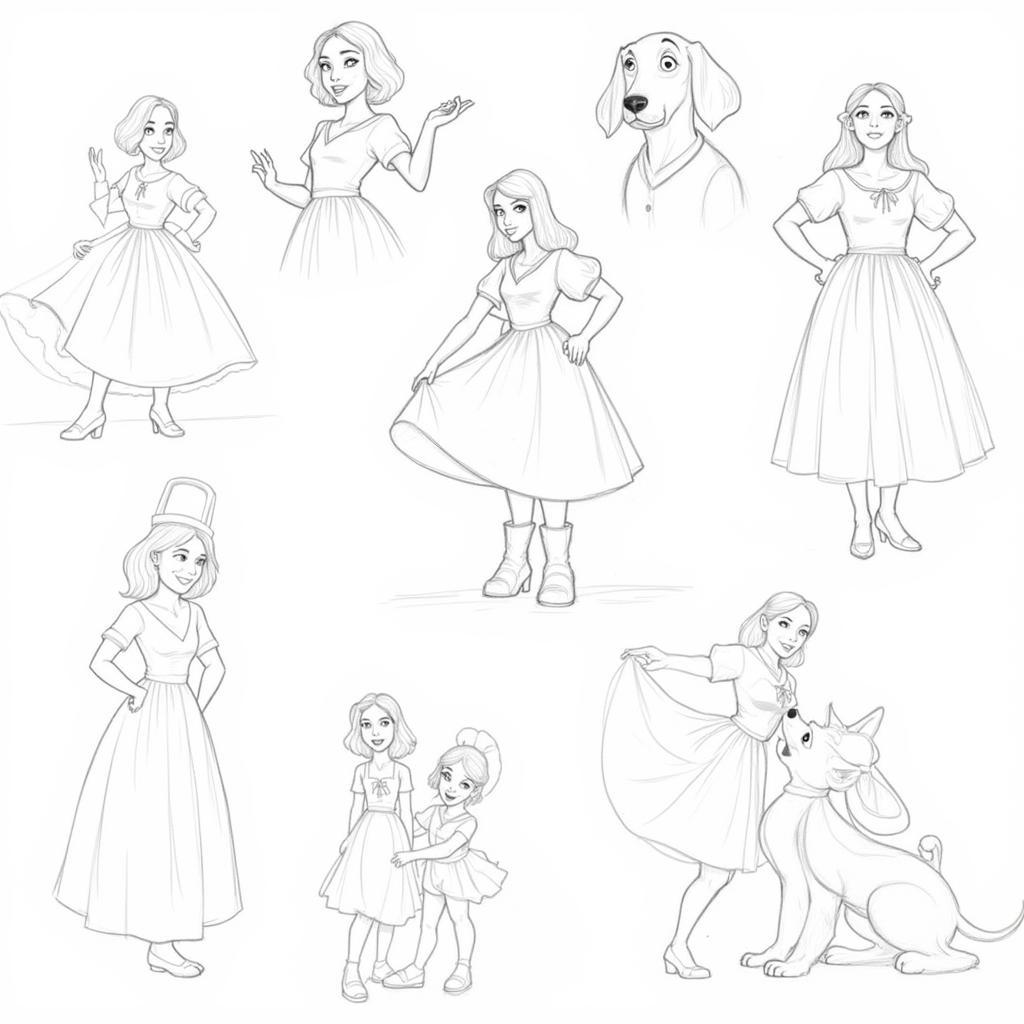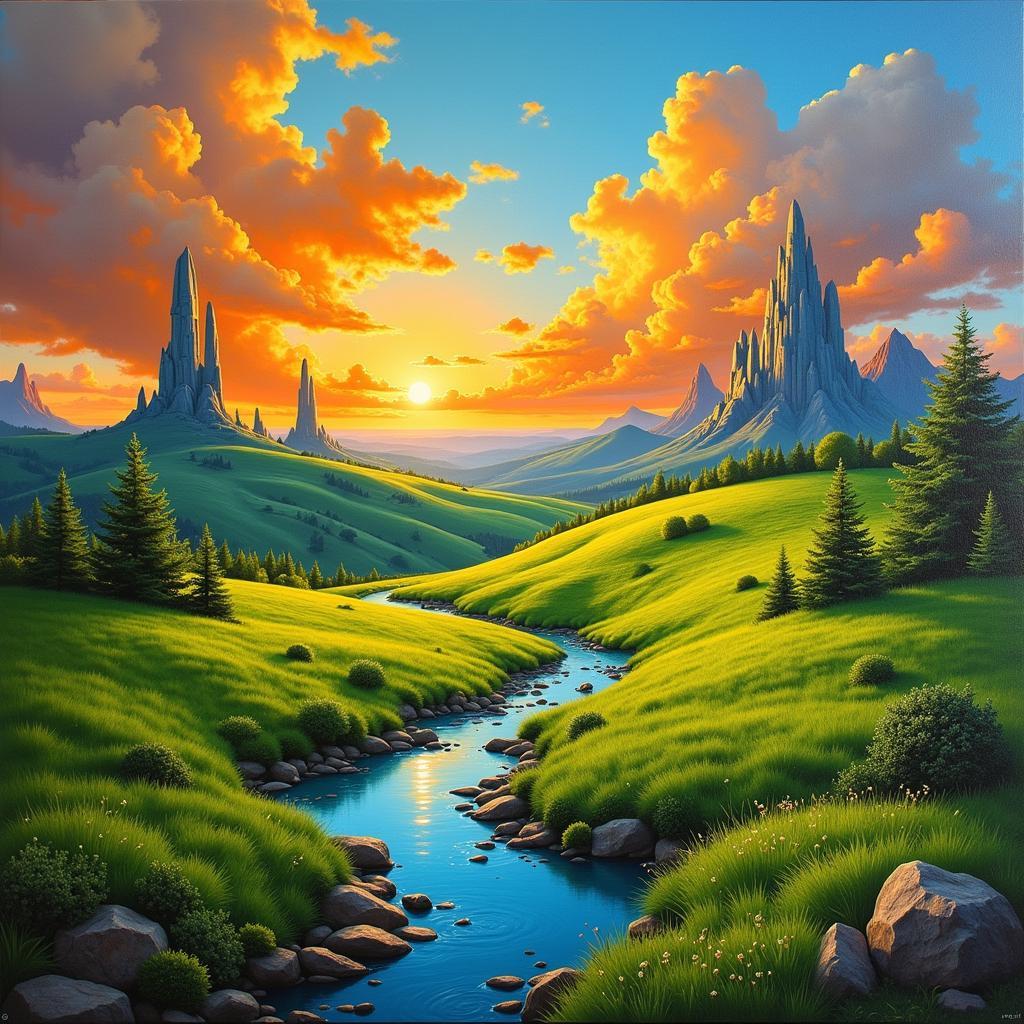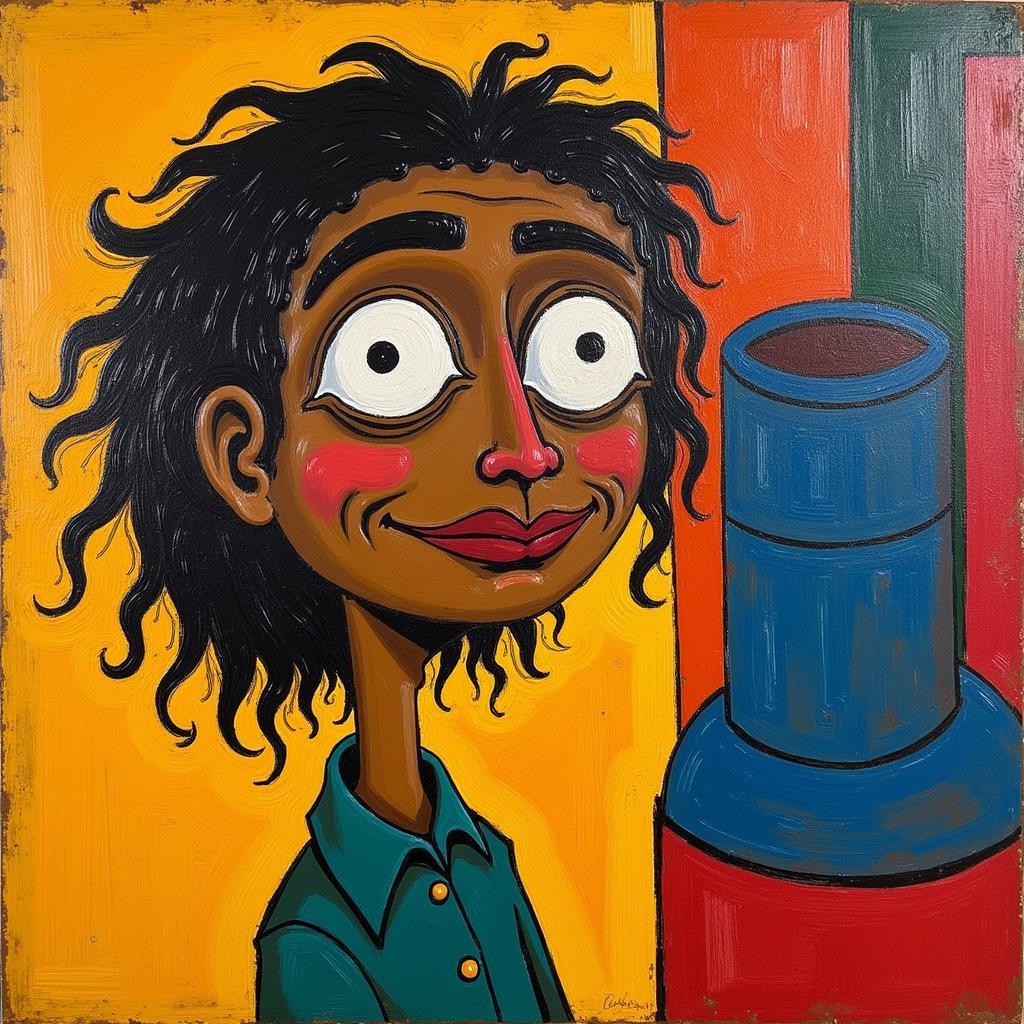Mastering Classic Portrait Art: A Digital Artist’s Guide
Classic Portrait Art, a timeless genre, captures the essence of a person, not just their likeness. From the Renaissance masters to contemporary digital artists, the pursuit of capturing the human spirit remains a powerful artistic drive. This guide explores the fascinating world of classic portraiture, offering insights, techniques, and inspiration for aspiring artists, whether you’re working with oils, charcoal, or pixels. Even in the digital age, understanding the principles of classic portrait art enhances your ability to create compelling and emotive digital art. You can create breathtaking portraits that stand the test of time by combining traditional techniques with modern digital tools.
Understanding the Foundations of Classic Portrait Art
The allure of classic portrait art lies in its ability to convey emotion, personality, and even a sense of the sitter’s inner life. Masters like Rembrandt and Caravaggio didn’t merely reproduce appearances; they captured the soul. Key elements of classic portraiture include composition, lighting, and the skillful use of color and brushwork to create depth and dimension. These principles are just as relevant in the digital realm as they are in traditional painting. Studying the old masters provides a rich foundation for any portrait artist, regardless of their chosen medium.
Take inspiration from artists like John Singer Sargent, whose masterful brushwork breathes life into his subjects, or the dramatic chiaroscuro employed by Caravaggio, which uses contrasting light and shadow to create a powerful sense of drama. These techniques, although developed centuries ago, can be adapted and applied to digital art, creating stunningly realistic or stylized portraits with depth and personality. Consider exploring metallic framed art to enhance the presentation and add a touch of classic elegance to your digital masterpieces.
From Canvas to Screen: Translating Classic Techniques to Digital Art
While the tools may have changed, the fundamental principles remain. Digital artists can leverage the power of software to explore and refine these techniques with unparalleled control. For example, layering in digital painting allows for non-destructive experimentation with color and composition, echoing the glazing techniques used by Renaissance masters. Digital tools also offer powerful options for color correction and manipulation, enabling artists to achieve nuanced and vibrant results. The ability to zoom in and refine details pixel by pixel provides a level of precision unseen in traditional media.
Think of your digital stylus as an extension of your hand, capable of replicating the delicate strokes of a brush or the bold lines of charcoal. Explore different brush settings to mimic the textures of traditional media, creating the illusion of oil paint, watercolor, or pastel. You can even incorporate elements of large colorful wall art into your digital portraits, drawing inspiration from contemporary movements while staying true to the spirit of classical portraiture.
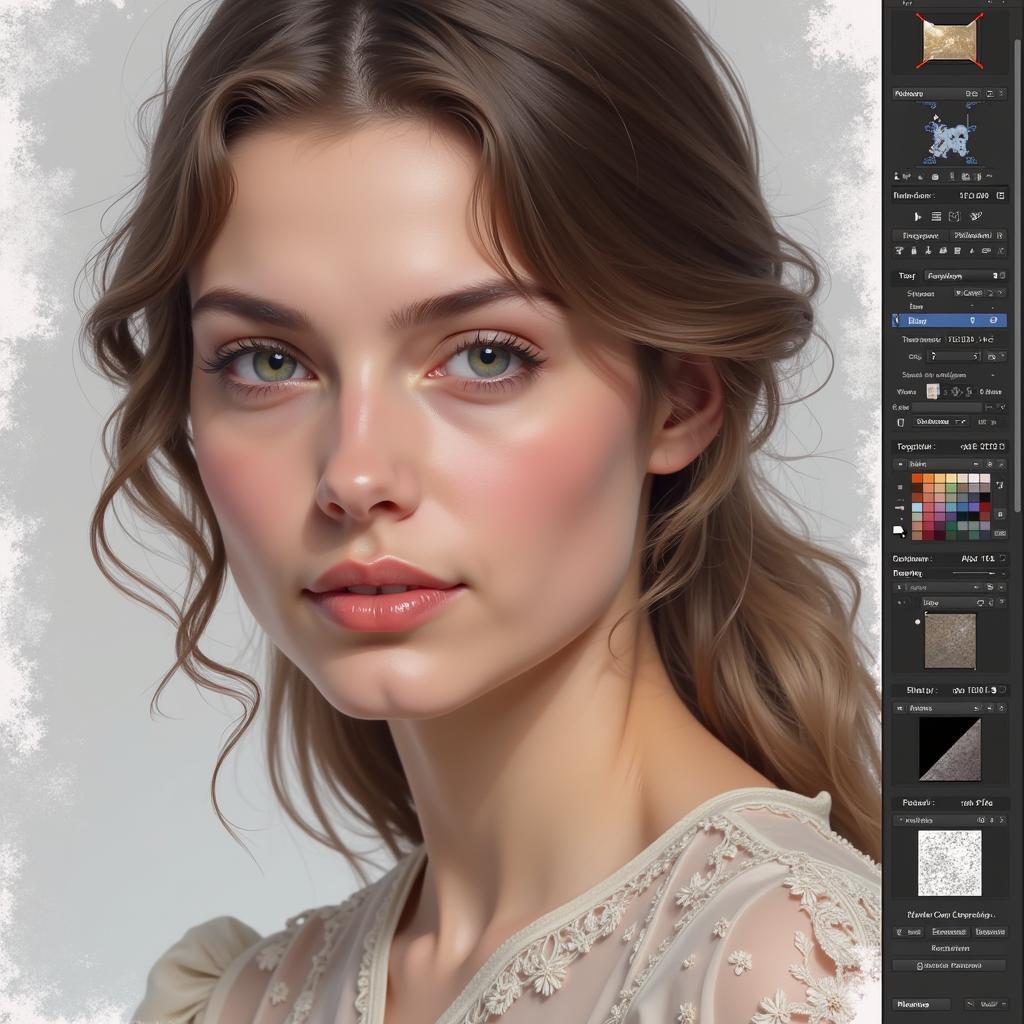 Digital Portrait Painting Process
Digital Portrait Painting Process
Breathing Life into Your Digital Portraits: Capturing the Essence of the Subject
Capturing the essence of your subject goes beyond mere physical likeness. It’s about conveying their personality, their mood, their story. Observe your subject carefully, paying attention to their posture, their expression, and the subtle nuances that make them unique. Consider the environment and how it interacts with the subject, creating a narrative context. In classic portraiture, the background often played a significant role in telling the sitter’s story, and this principle can be applied effectively in digital art.
Just like traditional artists, digital artists benefit from understanding anatomy and facial proportions. This knowledge allows you to create realistic and believable portraits, even when working in a stylized manner. Practice sketching from life or from photographic references to hone your skills. Even seemingly simple horse art activities can enhance your understanding of form and movement, valuable skills for any portrait artist. By mastering these fundamentals, you’ll be better equipped to infuse your digital portraits with life and emotion.
What Makes a Classic Portrait?
Classic portraits often share certain characteristics: a focus on the subject’s face and expression, a sense of timelessness, and a skillful use of light and shadow. But beyond these technical aspects, a truly classic portrait captures something more profound—the subject’s inner life, their personality, and their place in the world.
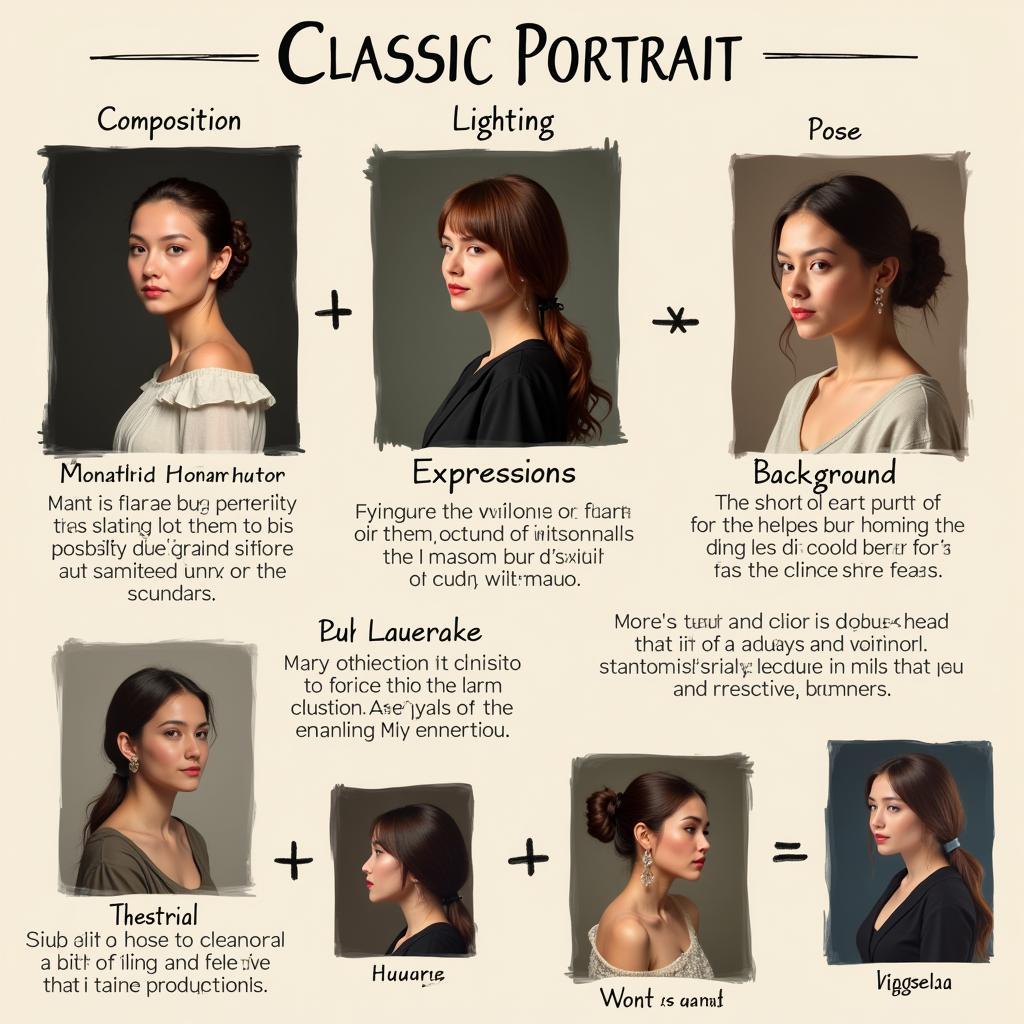 Elements of a Classic Portrait
Elements of a Classic Portrait
Conclusion: Embracing the Timeless Appeal of Classic Portrait Art in the Digital Age
Classic portrait art continues to inspire and captivate us centuries after its inception. By understanding the fundamental principles of this genre and adapting them to the digital medium, you can create stunning portraits that resonate with viewers on a deep emotional level. Embrace the power of technology to explore new possibilities while staying true to the timeless essence of classic portrait art. Don’t hesitate to experiment and find your own unique voice within this rich and rewarding artistic tradition. By combining the best of both worlds, you can elevate your digital portraits to new heights.
FAQ
- What are the essential tools for digital portrait art?
- How can I improve my likeness when painting portraits digitally?
- What are some common mistakes to avoid in digital portraiture?
- How can I make my digital portraits look more realistic?
- What are some resources for learning more about classic portrait art?
- How do I choose the right lighting for a digital portrait?
- What are some tips for capturing the personality of my subject?
Common portrait art questions:
- What are the different styles of portrait art?
- How do I choose the right pose for a portrait?
- What are the best colors to use in a portrait?
- How do I create a background for a portrait?
Other helpful articles on our website:
For those interested in exploring other art forms, check out Elvis diamond art and summer classical art.
Need help with your digital art journey?
Contact us at Phone Number: 02462573573, Email: danteum@gmail.com or visit us at Savico Megamall, 7-9 Đ. Nguyễn Văn Linh, Gia Thụy, Long Biên, Hà Nội 10000, Việt Nam. We have a 24/7 customer support team.

